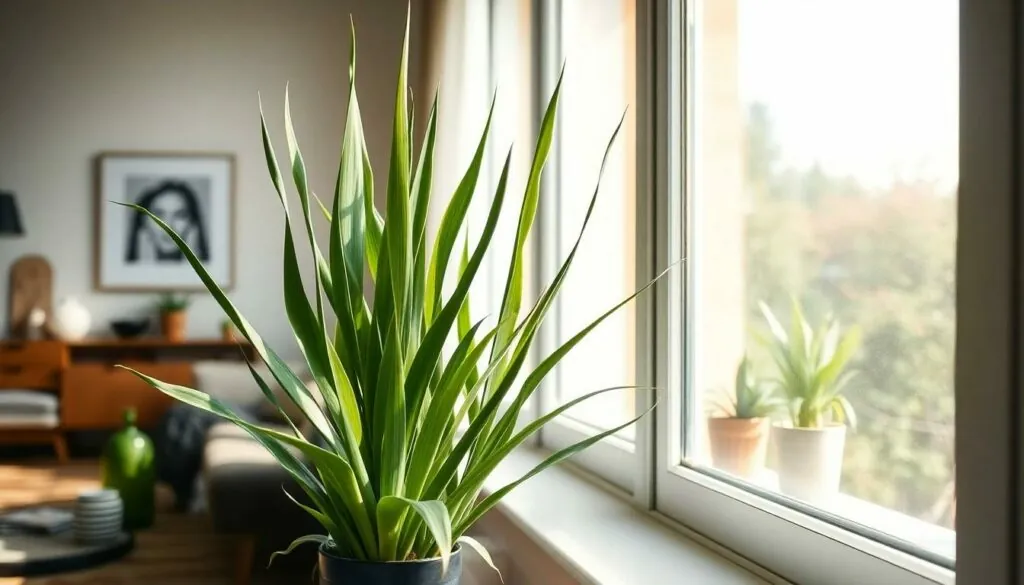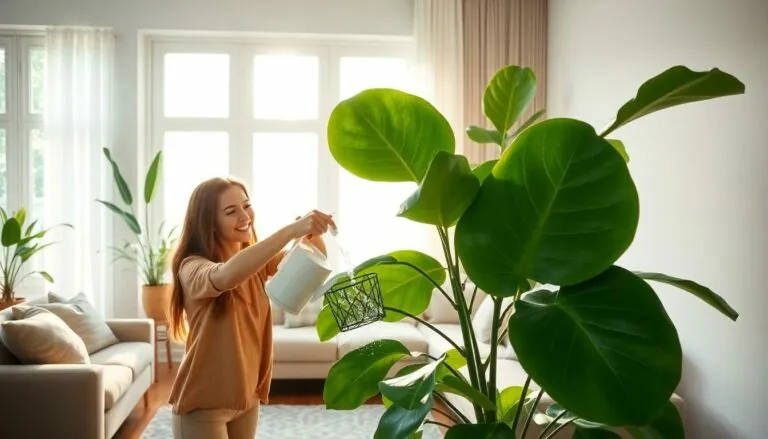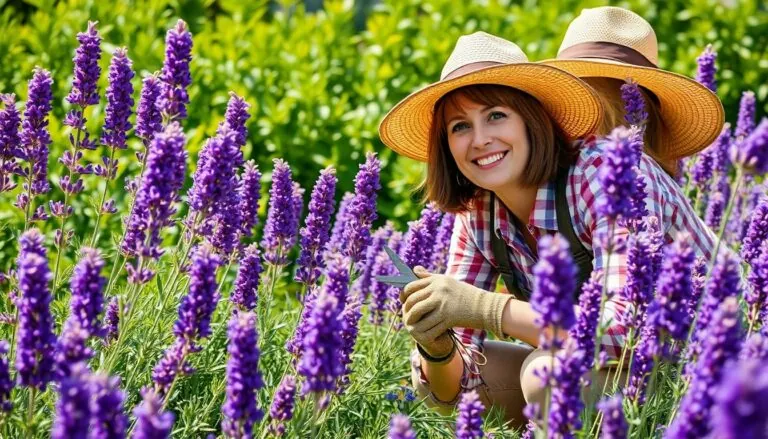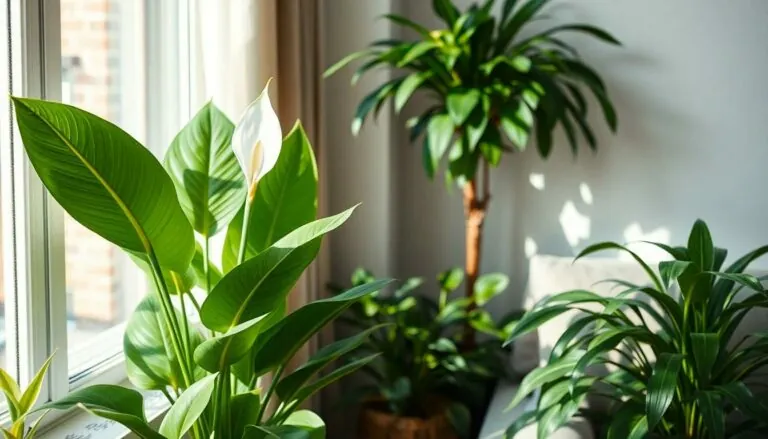Table of Contents
ToggleIf you’re looking to add a splash of green to your space, the African spear plant might just be your new best friend. This resilient beauty isn’t just a pretty face; it’s a low-maintenance powerhouse that thrives on neglect. Yes, you read that right—neglect! Perfect for those who can barely keep a cactus alive, the African spear plant is here to make your life easier and your home more vibrant.
Overview of African Spear Plant
African spear plant, known scientifically as Sansevieria hyacinthoides, features striking spear-like leaves that add a unique aesthetic to any environment. This plant thrives in various conditions, making it a favorite among indoor gardening enthusiasts. Resilience characterizes this species, allowing it to flourish even with minimal attention.
Typically, individuals grow this plant in well-draining soil, as poor drainage can lead to root rot. Light requirements are flexible; the African spear plant tolerates low light but performs best in bright, indirect sunlight. Watering practices are straightforward. The plant requires watering only when the top inch of soil feels dry, preventing overwatering issues.
Fertilizing is recommended during the growing season, typically spring and summer. A balanced houseplant fertilizer applied monthly meets the nutritional needs of this hardy species. Pests generally avoid the African spear plant, contributing to its low-maintenance appeal. Occasional mealybugs or spider mites may appear, but they are easy to manage with appropriate treatments.
Propagation of the African spear plant can occur through division or leaf cuttings. Dividing the plant during repotting effectively creates new specimens. Leaf cuttings provide another propagation method, though this may take longer to produce viable plants.
Aesthetic benefits abound, as the African spear plant complements various design styles. It adds a lively touch to modern homes and office spaces. Overall, the African spear plant serves as an excellent choice for anyone desiring a resilient and attractive indoor plant option.
Ideal Growing Conditions
The African spear plant thrives in specific conditions that support its growth and appearance. Proper care contributes to its overall health and vitality.
Soil Requirements
Well-draining soil is crucial for the African spear plant. A mix of potting soil and sand ensures adequate drainage, preventing root rot. Using a cactus potting mix also provides effective drainage; it offers the right texture. Soil pH should be neutral to slightly alkaline, ranging from 6.0 to 7.5. This range encourages optimal nutrient uptake and overall plant health.
Light Exposure
Bright, indirect sunlight suits the African spear plant best. It tolerates low light but flourishes in optimal lighting conditions; this enhances its vibrant colors. Placing the plant near a window with filtered light works well. Direct sunlight may scorch the leaves, so avoid these situations. A consistent light routine promotes strong, healthy growth, making it an appealing addition to any indoor space.
Watering and Fertilizing
Proper watering and fertilizing techniques significantly enhance the health of the African spear plant. Understanding these aspects ensures vibrant growth and longevity.
Watering Frequency
Watering frequency plays a crucial role in maintaining optimal moisture levels. The African spear plant thrives when its top inch of soil dries out before the next watering. During warmer months, this typically means watering every 2 to 3 weeks. In cooler months, hydration needs decrease, requiring less frequent watering. Observing changes in leaf texture also provides valuable clues about water needs. Curling leaves suggest underwatering, while yellowing leaves often signal overwatering.
Choosing the Right Fertilizer
Choosing the right fertilizer for the African spear plant can enhance its growth. A balanced houseplant fertilizer works best during the active growing season, generally from spring to summer. Applying fertilizer every 4 to 6 weeks promotes healthy foliage. Ensure the fertilizer has equal parts nitrogen, phosphorus, and potassium for optimal results. Diluting the fertilizer to half strength helps prevent nutrient burn and supports gradual growth.
Pest and Disease Management
Managing pests and diseases is crucial for maintaining the health of the African spear plant. Though resilient, the plant can occasionally attract certain pests.
Common Pests
Mealybugs and spider mites commonly affect the African spear plant. These pests thrive in indoor environments, especially under dry conditions. Look for mealybugs as white, cotton-like masses on leaf bases or leaf joints. Spider mites appear as tiny webs and can cause leaf discoloration. Regular monitoring ensures early detection, making it easier to address any infestations quickly.
Preventive Measures
Maintaining optimal growing conditions helps prevent pest issues. Proper watering practices contribute to plant health, as overwatering can weaken the plant and make it more susceptible to pests. Keeping the environment humid can deter spider mites, who thrive in dry areas. Regularly inspecting leaves and removing any debris fosters a cleaner space, reducing pest habitats. Using insecticidal soap or neem oil serves as an effective treatment if pests are identified, ensuring the African spear plant remains healthy and vibrant.
Pruning and Propagation
Pruning and propagation are essential techniques for maintaining the African spear plant’s health and aesthetics. Following specific practices enhances its growth and appearance.
Pruning Techniques
Pruning helps shape and size the African spear plant. Removing yellowing or damaged leaves promotes new growth. Use clean, sharp scissors to make cuts cleanly. Always trim leaves at their base to prevent stress. Regular pruning encourages bushier growth and maintains a neat appearance, particularly in indoor spaces. Aim to prune in early spring, just before the growing season starts, to stimulate healthy new growth.
Propagation Methods
Propagation allows for creating new African spear plants. Division during repotting serves as the most effective method. Carefully separate root clumps while ensuring each section has healthy roots. Alternatively, leaf cuttings can produce new plants. Cut healthy leaves into sections, letting them callous over for a few days before planting in soil. Moistening the soil encourages rooting. Keep newly propagated plants in a warm, bright location to support their growth, ensuring they adapt well to their environment.
Caring for the African spear plant is a rewarding experience that enhances any indoor space. Its striking appearance and low maintenance requirements make it a perfect choice for both novice and experienced plant enthusiasts. With the right care including proper watering and light conditions, this resilient plant can thrive and add a vibrant touch to homes or offices. Regular monitoring for pests and occasional pruning will ensure it remains healthy and visually appealing. Embracing the African spear plant not only beautifies an environment but also brings the joy of nurturing a living organism into everyday life.






